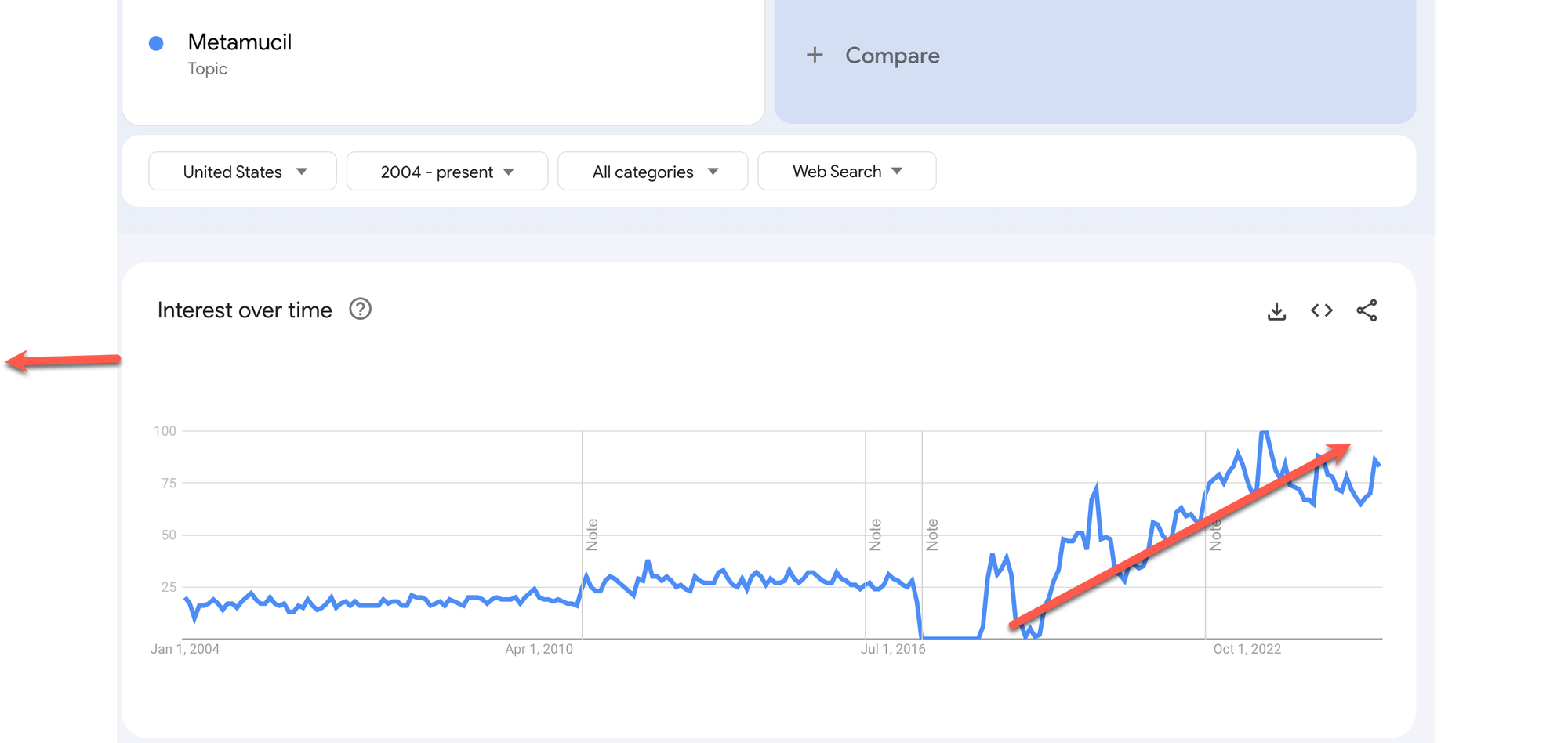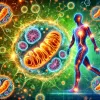Summary
• Dietary fiber is increasingly linked to all aspects of health
• Most Americans get far less fiber than the recommended daily allowance (RDA)
• The current RDA is less than 30% of what our ancestors consumed
Reminder
An excerpt follows, but the full post, and an audio version, are only available to subscribers.
The Details
Talking about dietary fiber often has an agist ick factor. Check out this decades-ago Metamucil advertisement:
Be honest. What was your reaction to the ad? Was it:
- Fiber? Bring it on.
- Regularity? So ick.
Most people almost certainly had the latter reaction. Granted, there are many people for whom regular bowel movements are a problem, and dietary fiber can help. The incidence increases with age, which is one of the reasons why Metamucil searches are soaring in an aging society, and why it has doubled sales in the last five years.

What is Dietary Fiber Anyway
Dietary fiber is a type of carbohydrate found in plant-based foods. The body cannot digest it, so it passes through the digestive system largely intact. Before explaining why that's important, note that there are two forms of dietary fiber: soluble and insoluble.
- Soluble Fiber: This fiber dissolves in water, forming a gooey, gel-like substance. It is commonly found in oats, fruits, beans, and lentils. Soluble fiber helps regulate blood sugar and lower cholesterol, which we will come back to.
- Insoluble Fiber: As its name suggests, insoluble fiber does not dissolve in water. It is found in whole grains, vegetables, and seeds. While passing through the digestive system it absorbs water, adding bulk to stools, which increases defecation urgency, reducing the likelihood of constipation.
Why Eat Something You Can't Digest
It can seem a mystery that our bodies are healthier when we eat something—fiber—that they can't digest. After all, we also can't digest rocks, and yet we don't eat those.
The puzzle can be resolved by going back to evolutionary history. We need fiber because our bodies evolved alongside plant-based diets, making fiber an integral part of our physiology.
Things to keep in mind:
- Gut Adaptation: Fiber feeds gut bacteria that produce short-chain fatty acids, which nourish the colon, regulate inflammation, and support immunity. Without adequate fiber, and enough fiber varieties, these processes are disrupted.
- Digestive Mechanics: Insoluble fiber ensures that stools retain water and move efficiently through the colon, preventing sluggish digestion and related complications (e.g., constipation or diverticulosis).
- Energy Regulation: Soluble fiber slows carbohydrate absorption, which helps prevent metabolic disorders like diabetes. We will come back to this.
- Cholesterol Transport: Fiber binds with bile acids, which forces the body to use cholesterol to create more bile. We will come back to this too.
Humans don't "need" fiber in the same way we need calories or essential nutrients, but its absence creates health risks. In contrast, rocks, while also not digestible, provide no nutritional or functional benefit.
Why We Don't Get Enough Fiber
Humans often fail to get enough fiber due to a combination of food processing and how modern dietary habits diverging sharply from our evolutionary history.
Here is what you need to know:
- Processing Removes Fiber: Industrial food production prioritizes taste, texture, and shelf life. Refining grains removes the fiber only the starch. Similar processes strip fiber from fruits (juicing), vegetables (peeling), and legumes (refined products). This makes foods last longer but makes them fiber-free.
- Shift to Low-Fiber Foods: Modern diets are loaded with processed, calorie-dense, low-fiber foods like refined grains, sugars, and oils. These foods are cheaper, more convenient, and more palatable than whole, fiber-rich foods, so people buy them.
- Evolutionary Context: Early humans consumed fiber-rich diets (100-150g /day) from foraged plants, seeds, fruits, and tubers. In contrast, modern diets average only 10–20g/day of fiber. This dramatic decline creates a mismatch between our evolved physiology and food environments.
- Convenience Culture: Urbanization and time constraints promote reliance on fast food and prepackaged meals, which are typically low in fiber. Whole foods like vegetables, legumes, and whole grains require more preparation, making them less likely to be eaten.
- Loss of Food Diversity: Early humans consumed a wide range of plants with varying fiber types (soluble, insoluble, fermentable). Modern agriculture tends to reduce fiber variety, reducing fiber intake and diversity. Different kinds of fiber have different effects
The combined effect of these factors is our current, large dietary fiber gap.
The Audio Version of this Post (members only)
Read the full article
Sign up now to read the full article and get access to all articles for paying subscribers only.





